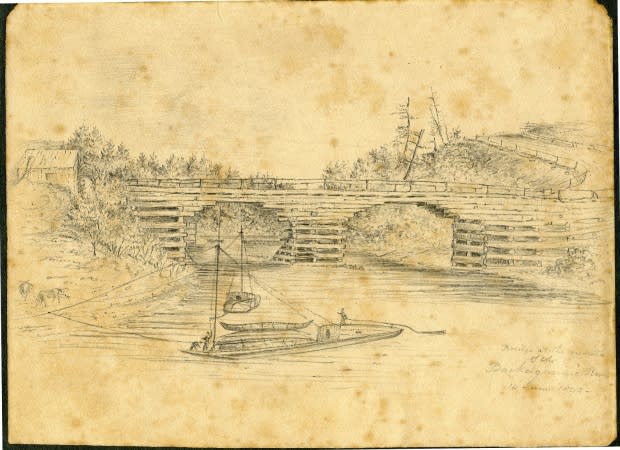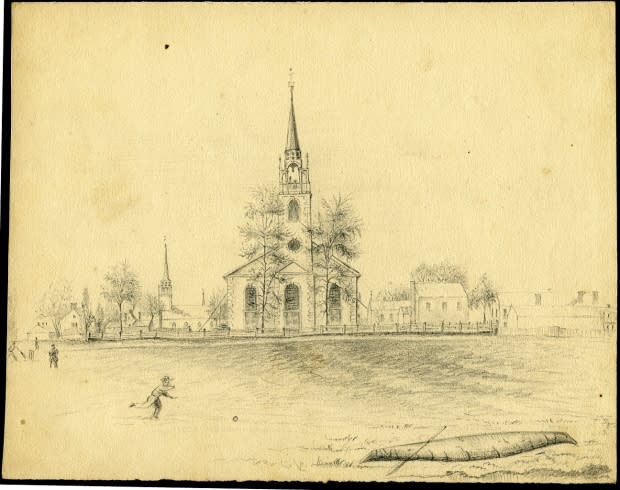Rare sketches depict New Brunswick before photography
Sketches donated to the Provincial Archives of New Brunswick offer a rare glimpse at the landscape of the province in the pre-photography era.
The sketches were drawn by a little-known artist born in Charlottetown in 1816, Samuel Douglass Smith Huyghue.
Huyghue grew up in Saint John and was a commissary agent for the boundary commission in the 1840s, surveying the border lines between Maine and New Brunswick. As he travelled around the province, he became a landscape artist.
"None of his art has really been seen," said Josh Green, a photo archivist at the Provincial Archives of New Brunswick.

"There are probably some things drawn here that we don't have any other depictions of basically, so they might be the only view of these places at that time," said Green.
The Archives has 10 of Huyghue's pieces, eight of which depict rural and town scenes from New Brunswick between 1842 and 1846. The other two show scenes from Quebec.
One of the sketches depicts Saint John, another illustrates the old church that preceded the Christ Church Cathedral in downtown Fredericton.

Green said the story of how they got the images is almost as interesting as the sketches themselves.
"The first six of them came to us from Australia. They were kept under a bed in a family home, basically."
The other four pieces were donated by someone from Grand Bay.
Green said Huyghue moved from New Brunswick to London in the late 1840s and tried to make it as a writer by publishing books about his adventures in New Brunswick.

"He didn't sell enough books and kind of failed as a novelist and moved on to Australia, where he was a civil servant and artist for the rest of his life and all the stuff stayed there."
Huyghue died in 1891 in Melbourne, Australia.
Green said Huyghue's sketches are an important part of the visual history of the province.
"Because there are very few relatively few early depictions of New Brunswick, every time we find a new one that can be positively attributed to early 19th century or the first half of the 19th century or late 18th century, it's really important because it expands a quite small collection of known depictions of the province."

